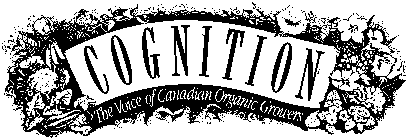

Cognition Index | Virtual Library
| Magazine Rack
Search
| Join the Ecological Solutions Roundtable
by Kris Saseniuk
Permaculture’s rebirth today began in Australia with the thoughts and ideas of Bill Mollison and David Holmgren. But the real credit for permaculture must go to our ancestors, for the ideas we call new were a way of life for them.
The word permaculture, taken from permanent and agriculture, refers to an integrated and evolving system of perennial and self-perpetuating plant and animal species useful to man. The plan of permaculture is to have a complete agricultural ecosystem, based on existing natural systems. By adopting permaculture, we can all step forward towards a sustainable society, one where we can again provide our own food, shelter and energy. The permaculture system is an environmentally sound and economically viable one, readily adaptable for small-scale backyard plots, family farms and even sidewalks and rooftops.
The two-week course from which I recently graduated was coordinated by Richard Griffith of Agincourt, Ontario and Diane Villemure, of Dundas, Ontario. It was designed to implement practical training showing a working understanding of permaculture principles and applications. The course was a community building process with a mix of lectures, field trips, personal observations, hands-on and team design work, lots of group sharing and presentations. The instructors were Peter Bane, publisher and editor of The Permaculture Activist, and Chuck Marsh, a landscape horticulturist, permaculture designer and teacher. The culmination of the course was to design group permaculture plans for our host, Doug Tyler of the beautiful Ecology Retreat Centre in Hockley Valley near Orangeville, Ontario.
I was nearly overwhelmed by the intensity of the course: it proved to be a full school term scrunched into two quick weeks. No problem, though – the friendly group taking it was ready and willing. Each and every one of us provided helping hands, strong backs, advice and even shoulders to cry on. (We proved to be a very open group, with emotion being a strong part of our education.) We were 35 men and women, ranging in age from teenagers to seniors.
About 25% of the course was held outside. We collected data on the 35-acre site, noting things like air temperature and the types of plants growing in various situations. Four field trips took us to orchards and organic farms for observation. We all participated in the creation of a sheet-mulch garden, and practised our site-leveling skills.
Both inside and out, we covered a large amount of material. We learned the philosophy, ethics and underlying principles of permaculture, opened ourselves to observation, looked at patterns, read the landscape, and studied natural system dynamics. We looked at soils, water, soil remineralization, forests, aquaculture, agroforestry, microclimate, herbalism, alternative building materials (tires, straw bales), animals, sheet mulch gardens, swales and leveling, indoor techniques (gardens, sprouts, composting, vermicomposting), urban and rooftop gardening, plants and orchards, grafting, and home garden design. We gained an understanding of more abstract concepts: alternate economics and land trusts, L.E.T.S. and alternative currencies (trade and barter), community supported agriculture, self and community empowerment, and community economic development. (If reading all this makes you feel out of breath, imagine how we felt at the end of the two weeks!)
A typical day started with breakfast from 7 till 8, after which we gathered at the meeting hall at 8:30 and started classes at 9. Classes were an hour and a half long with half hour breaks. We took an hour at midday for lunch. Supper at 6 was followed by an optional evening lecture which most of us attended. The meals were vegetarian and delicious. At the end of the evening, we’d crash or get together to pound on the drums, howl at the moon and discuss the day’s teachings.
The two-week course, everything included, cost $900. and was well worth it. To offset the fees, some participants were able to arrange various sources of sponsor money. One of my friends in the course paid only $40 from her own pocket!
For more information about perma-culture design courses, contact:
• Richard Griffith, 104 Bridlewood Blvd., Agincourt, ON M1T 1R1 (416) 497-5746
• Ecology Retreat Centre (Permaculture demo site), R.R.#1, Orangeville, ON L9W 2Y8
Kris Saseniuk is presently a candidate for an Environmental Technologist Diploma at Loyalist College in Belleville, Ontario. He has a passion for plants
Copyright © 1993.
Kris SaseniukReprinted with permission. All rights reserved.
Info Request | Services | Become EAP Member | Site Map
Give us your comments about the EAP site
Ecological Agriculture Projects, McGill University (Macdonald
Campus)
Ste-Anne-de-Bellevue, QC, H9X 3V9 Canada
Telephone:
(514)-398-7771
Fax:
(514)-398-7621
Email: info@eap.mcgill.ca
To report problems or otherwise comment on the structure of this site, send mail to the Webmaster